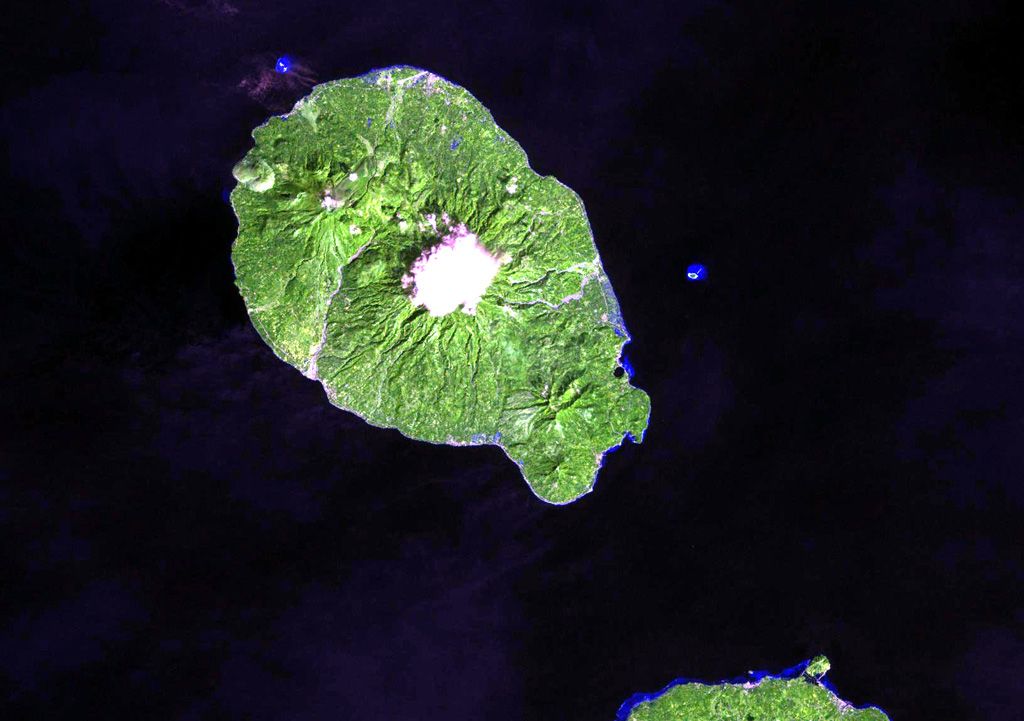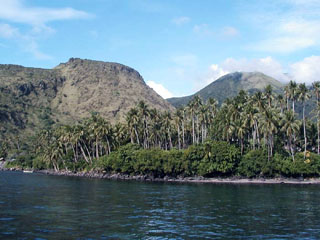Global Volcanism Program | Image GVP-11123

Camiguin Island, just off the coast of north-central Mindanao Island (lower right), consists of four overlapping cones. Cloud-covered Mt. Mambajao forms the high point of the island. The youngest volcano, Hibok-Hibok (also known as Catarman) at the NW end of the island, has been historically active. Major eruptions during 1871-75 and 1948-53 formed flank lava domes at Hibok-Hibok and produced pyroclastic flows that devastated coastal villages.
NASA Landsat image, 2002 (courtesy of Hawaii Synergy Project, Univ. of Hawaii Institute of Geophysics & Planetology).
![]() This image is made available as a Public Domain Work, but proper attribution is appreciated.
This image is made available as a Public Domain Work, but proper attribution is appreciated.

Camiguin
